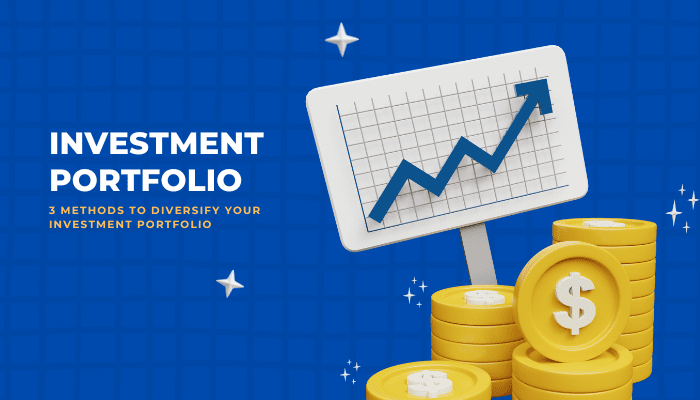In times of economic uncertainty, it’s essential to ensure your investment portfolio is as diversified as possible to mitigate any negative exposures you may have. If you’ve bought nothing but shares in bars and restaurants and a global event – something like, for instance, a pandemic – radically alters human behaviour for a year, then you’ll unfortunately have learned the hard way not to put all your eggs in one basket.
But how should investors go about ensuring their portfolio is sufficiently diversified, and what are the best options if you’re looking to have maximum impact on reducing your risk profile?
In general, the options available are diversifying within an asset class, diversifying across asset classes, and diversifying across different markets. The best portfolios will ensure that for every investment, there is another investment that is inversely correlated with it – that is, a scenario that would cause investment A to drop, would see a rise in investment B. We explore these options in more detail below.
1) Diversifying within an asset class
The first and simplest option to consider is ensuring that you have invested widely within whichever asset class you are invested. So if you hold stocks or shares, make sure that they are in a broad range of sectors, and ideally, that each investment is balanced by a complementary investment, so that in any given situation, the value of each will move in opposite directions.
This means if you invested in a restaurant chain, just before that pandemic, you should also have invested in a ready to drink cocktails company, for example. When the pandemic happened, many restaurants struggled due to the reduction in footfall, but the ready to drink cocktails industry saw enormous growth, as more and more people chose to socialise at home.
Index funds
Index funds are a kind of mutual fund that tracks established market indexes, like the Nasdaq Composite Index or S&P 500. They make investments across a broad variety of companies and sectors – the companies in the index – resulting in portfolios which are naturally diverse. In most cases, the minimum investment is in the thousands rather than the tens of thousands, and the fees are low. The downside is that they are passive investments, so they can be inefficient in difficult economic conditions, because they track their index regardless of the market situation.
“Consistently buy an S&P 500 low-cost index fund,” Buffett said in 2017. “Keep buying it through thick and thin, and especially through thin.” – Warren Buffet
Warren Buffet suggested that index funds are an ideal method for retirement investing, because they remove the need to choose individual investments, and instead gives investors a low cost option for investing in a diverse range of established companies.
Exchange Traded Funds
Exchange traded funds, or ETFs, are ideal vehicles for diversification because of their flexibility and liquidity. They can be bought and sold on an exchange – hence the name – just like any other stock, but they represent a collection of securities that track a wide variety of categories. Commodities, sectors, industries, currencies, even bitcoin – you’ll find ETFs that track each of these, and more. In this way, they are similar to mutual funds, but they differ in the ease with which they are bought and sold, meaning they are more liquid than mutual funds.
2) Investing across asset classes
Many investors choose to diversify even more widely, and spread their money across multiple asset classes. These investors’ portfolios hold a mix of traditional investments, like stock and bonds, and alternative investments. But what are alternative investments?
Alternative investments
Alternative investments are largely separate from public markets, meaning they enjoy something of a buffer against the fluctuations of the stock market. Some classes, such as private equity, require sizeable minimum investments – anything from £250,000 to £25m. But others, such as EIS and SEIS, are much more accessible.
EIS and investing in startups
A key benefit of EIS particularly – the Enterprise Investment Scheme – which incentivises investing in startups with generous tax reliefs – is that you can invest in a wide variety of different startups, in different sectors.
The most common way people invest in EIS is through a fund: the fund selects investments and builds you a portfolio. Some funds focus on a specific sector, such as tech, while others are sector agnostic, meaning as your investment is deployed, new companies in different sectors are added to your portfolio. While the tendency has been to build portfolios of between five to fifteen companies, newer funds are focusing instead on building very large portfolios of 50 companies, to spread the risk as widely as possible.
There are some drawbacks, of course. Investments in startups are usually illiquid, and long term. Companies can take years to grow, and it could take anything from five to ten years until you see any returns. There is no secondary market for shares in private companies, and once you’re invested, you’ll need to hold the shares for at least three years to remain eligible for tax reliefs. But these are considerable: 30% income tax relief, capital gains tax relief, and the investments are exempt from inheritance tax.
3) Investing across markets
In addition to the diversification approaches we’ve covered, investors can also look to put their money in different international markets and capitalise on the higher rates of growth to be found in emerging markets. Investments in Chinese or Indian industry, for example, might see faster growth than similar investments in mature markets like the US or the UK. An additional benefit is the diversification of currency exposure – any investment you make in a certain market is also an investment in that market’s currency, so the more markets you invest in, the greater the diversity of currencies you hold.
Naturally, emerging markets are less stable, and investments in these riskier markets should be offset against investments in more stable, developed markets. The simplest and most cost effective way to invest in foreign markets is through an ETF (mentioned above) that tracks foreign equities.



































